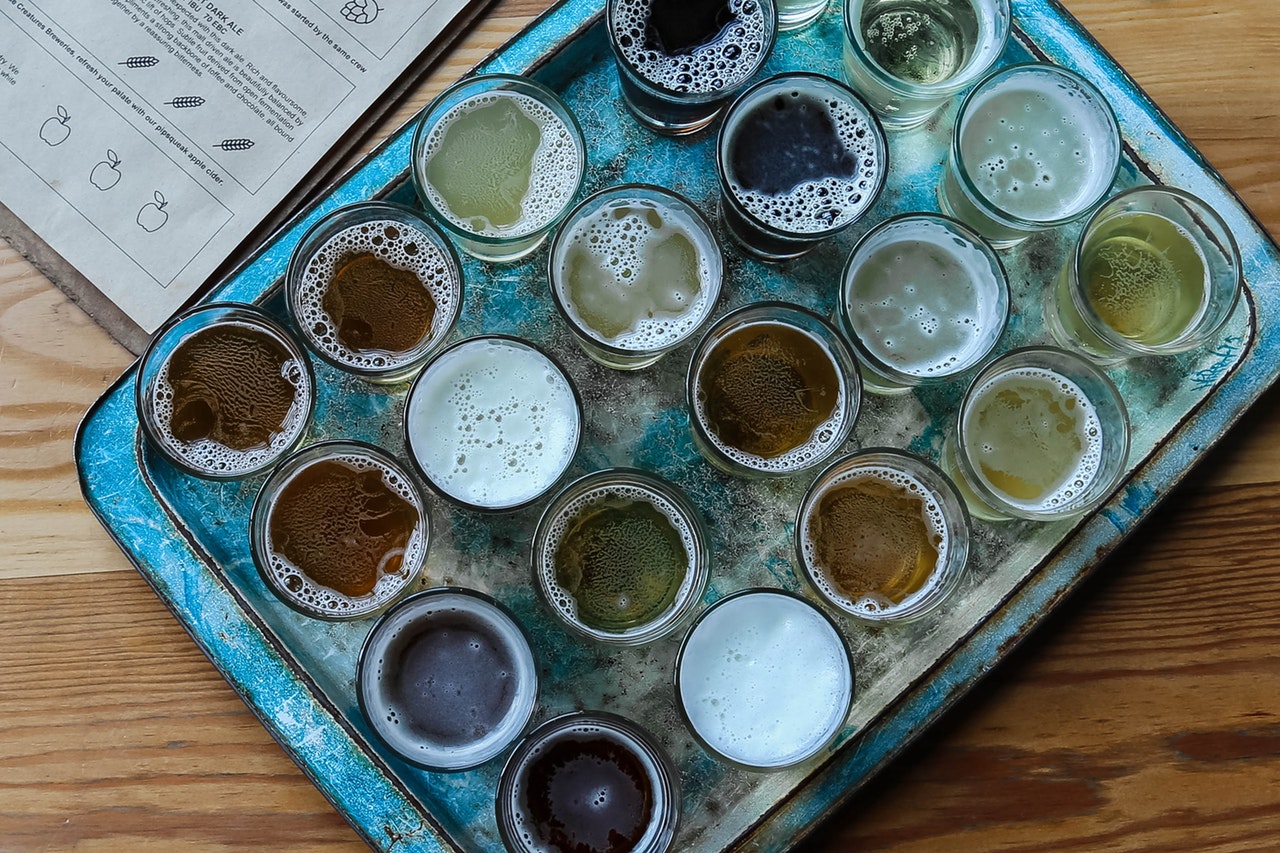
As exciting a time as it is to be a beer drinker today, it is also one of the most confusing times. The number of breweries and variety of styles available can easily overwhelm the casual drinker, let alone a neophyte. It would be a shame to allow all of those good to great flavors pass you by simply due to a little confusion and a touch of intimidation. Titles such as Joshua M. Bernstein’s The Complete Beer Course help remove a good amount of the unknown and help build confidence around what is an endlessly approachable and delicious beverage. As with a beer, this book may be assessed on a variety of characteristics.
Appearance
A large-ish, square-ish book with some heft (nearly 3 lbs.). Colorful images and fonts. Many images are a beautiful full page. Even on all text sections there are background designs. Beyond photos the book provides supporting diagrams and stylized graphics. Side bars exits throughout the text, helping to breakout the material and keep the information from becoming overwhelming.
Twelve logically laid out chapters, mostly on beer styles. Again, plenty of photos and sidebars to keep the presentation fresh and break up the amount of material. A scan and zoom approach: find a style, go to chapter, browse through, find sub style descriptions, present day examples, go to the store and sample in real life. A good setup that we can work with.

Swirl & Smell
Twelve lessons across a variety of subject matters, primarily beer styles, but also the fundamentals of taste, pairing and cellaring, truly make this a boot camp in bringing drinkers up to speed on a ton of content. Additionally, the material is immediately tied to the present by way of two methods: an end of chapter brewery spotlight and intra chapter beer style representatives for the reader to go out and better appreciate the numerous styles and sub styles of beer available. These two characteristics, especially the latter, help ground the large amount of information into a concentrated point. As the author reminds us, “we have to practice tasting and preference is a matter of perspective.” The best way of uncovering what we enjoy is by getting out there and gaining some experience. His intuition on hands on participation extends to storing beer as well as food pairing, two of the more advanced, challenging, and enjoyable aspects of appreciating one’s beer to the utmost.
Historical tidbits, brewery profiles, a run down on ingredients and processes. The author writes with passion, knowledge, and clarity. This title definitely passes the smell test.
Taste
Part of what you are looking for in a book of this sort is its effectiveness as a reference guide. Perhaps this is what most people look for, even after reading it front to back. This title may be added to a handful of others as a candidate for this role in your library. There’s no saying you cannot have more than one reference book. In fact, I recommend a few of the classics to have by your side: Randy Mosher’s Tasting Beer and Garrett Oliver’s The Brewmaster’s Table to name just two. This title fits among and between the two classics, digging a bit deeper on some topics than the first without being as exhaustive on the food aspect, naturally, as the latter.

A well thought out and structured approach to tackling the seemingly endless beer styles out there. The chapters have a consistent framework while avoiding becoming formulaic. There is enough variety sprinkled into the predictable patterns of the chapters to avoid their becoming repetitive. This continued freshness is no easy task for a subject so large, at least it is no easy temptation to sidestep. The opening two chapters are the longest and a true crash course in getting readers on equal footing with respect to beer ingredients, production, and serving presentation. With this backbone in place the book commences to branch out, running through various beer styles and categories.
Similar to a flight or multi-course meal we begin with lighter fare, progressing toward richer, more flavorful offerings, going from the clean, crisp lagers and pilsners of central Europe and North America to the pales of England and Belgium, the hop bombs that have become ubiquitous and onwards to Belgian darks, porters, stouts and barley wines.
The book’s “building up” chapters are well laid out and organized. Beer style chapters provide a personal touch from the author, historical tidbits, cultural trivia, two or more recommended styles for some at-home, real world follow up, finishing off with a brewery spotlight.
Overall
The information is well put together and laid out. However, there is a ton of information for a newbie and it is not quite clear they would not be overwhelmed by it, end up putting the book down from overload, and leaving it laying around as a coffee table – also not a bad option as there are several dozen illustrations worth leafing through. The book is naturally a quick reference guide for when a fact or historical angle needs confirmation. If the reader is not overwhelmed by the endless beers, and why would they (blasphemy!). The writing style is casual and engaging, broken up into tiny bits that can be experienced at an individually convenient pace. Additionally, this book clocks in at just 300 pages so the journey is not endless, though some of the larger chapters can at times seem long (e.g. the ground laying chapters 1 and 2). It is inevitable that with so much technical, historical, and tasting information on hand the reader will come across something new or a variation on how to look upon a familiar topic.
Notes
Flights Photo by Amanda Klamrowski from Pexels